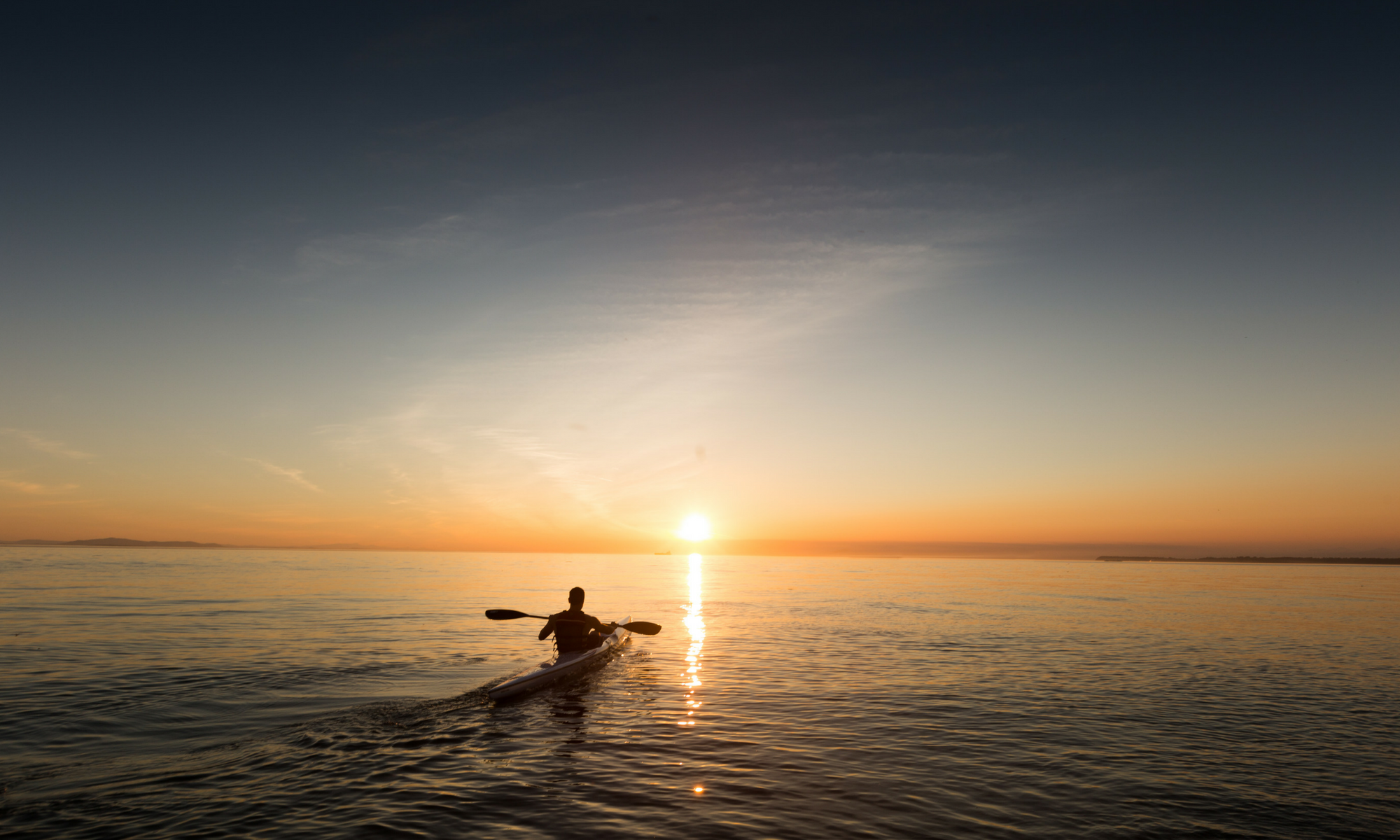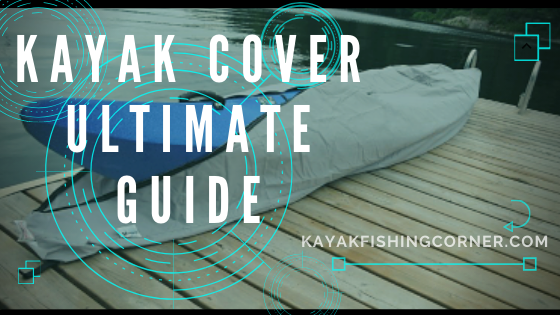Jump Ahead To:
Kayak Cover: Ultimate Guide
Did you know that you can add years and years of longevity to your fishing kayak? Well, you can! KFC has written this Kayak Cover Ultimate Guide to share our knowledge about one of the most underrated pieces of kayak fishing gear on the market! After reading this guide, you’ll wonder to yourself why more people don’t buy a kayak cover on Day 1! Ready to get started?
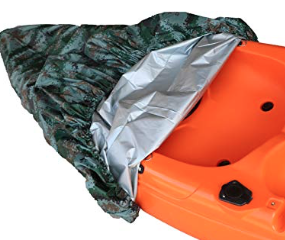
Overview
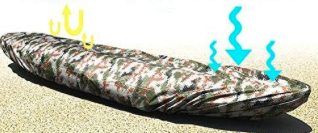
First, as an Amazon Associate, I earn from qualifying purchases.
Shortcut to the Best Kayak Cover
Welcome to KayakFishingCorner.com’s Kayak Cover Ultimate Guide! This Ultimate Guide contains all of the important details about kayak covers. After reading this post, you will be a pro on this particular subject and you may find that you want to offer a few comments or opinions of your own. We have added a Comments section on the bottom of this page for that very reason so please, feel free!
We want to make sure this post is very concise and organized. That way, it is easy for you (the reader) to get up to speed! We start by going over some basic information about kayak covers – What are they used for? What lengths to the come in? Are they waterproof? What are they made out of? And so on!
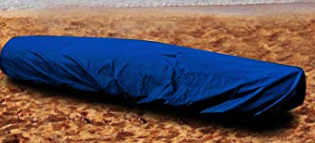
We’ve then included a “how to” checklist so you can quickly learn how to use a kayak cover. This checklist walks you through some “do” and “don’t” suggestions that we’ve developed over our years of using a kayak covers! Don’t worry, we keep it short and to the point so that its easy to remember when you are headed out to the water!
The next section breaks out three of the most important features that you’ll want to look for in whatever kayak cover you are evaluating for your own purchase. We go in depth on each particular feature and describe why the combination of each of the three results in an A+ product for serious kayak fishermen!
After that, we’ve added a link to a product page for a particular kayak cover that we know (from experience) ticks each one of the boxes highlighted from our “important features” section. You can click on the link to go straight to the manufacturer’s product page where you can find out even more details! Finally, we’ve added a short section detailing our own experience with this model of kayak cover – just in case you are interested!
Kayak Cover – Ultimate Guide
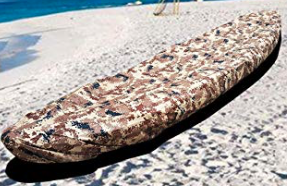
Please note: This post contains affiliate links. An affiliate link means that we may earn advertising/referral fees if you make a purchase through our links.
The image shown above is a pretty good example of what a basic kayak cover will look like. Kayak covers, and canoe covers for that matter, are typically made of a waterproof or water resistant material. You’ll often see them in a solid color (many times grey or black) though there are many camo colored offerings available as well.
The covers, as you might have guessed, are shaped like a kayak. The best models are rimmed with an elastic roping or clamping draw string of some type. Why? Because each of these two features are perfect for allowing the cover to expand, as is needed when you are sliding the kayak into the cover, and then contract, as is needed to ensure a proper fitting to the hull of the kayak.
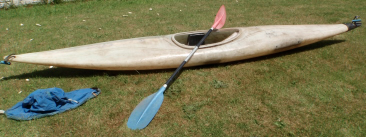
Some covers also come with one or two tightening straps that go underneath the hull of the kayak and add reinforcement to the elastic or draw string feature mentioned above. This is a great bonus feature and really helps the cover stay in place in high wind environments (think storms, or even when you are moving your kayak on the highway with a kayak cover)! You can find kayak covers in sizes anywhere from ~8ft to ~18ft.
As mentioned above, the elastic or draw string feature will help a the cover fit most any size of kayak with relative ease. We’ve found that you can buy a “basic” kayak cover for ~$15 – $25, with the nicest models ranging somewhere from ~$60 – $120 (though we don’t think you need to spend THAT much)!
How to Use It!

- Place your fishing kayak on flat land.
- Unfold the kayak cover and lay it on flat ground in front of or behind the kayak.
- Make sure to do your best to push out any “stuck” corners or folds.
- Pick the front of the kayak up and work the cover over the top of it.
- Pull evenly on both sides of the cover as you move it along the kayak’s hull.
- Make sure you have everything out of the cockpit before you cover over the top of it!
- Use the drawstring or elastic to fit the cover snuggly to the kayak.
- If you have them, use the one or two safety straps to reinforce the connection of the cover to the hull of the kayak.
- If possible, store in a temperature controlled and dry location, away from the sun.
Important Features to Look For!

High Quality Material. Make sure that your kayak cover is made of a material that is water repellent or waterproof. Believe it or not, some kayak covers are not. This is dangerous to the longevity of a fishing kayak because this type of material will get wet and STAY wet, effectively ensuring that your kayak is constantly wet – prime conditions for mold!
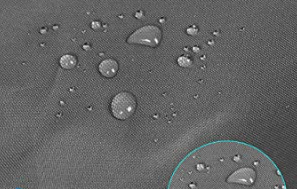
Some of the better models of kayak cover come with UV resistant material. This is great for protecting the kayak from the harsh rays of the sun. Remember, constant bright sunlight can do just as much damage to your kayak as exposure to hot, cold, wind and rain!
Tight Fitting Connection. We mention it above, but it is worth reiterating that you need to find a kayak cover that has a dual connection method. First, you need an elastic or draw string band that runs on the outside edge of the kayak cover and allows for you to access the inside of the kayak with ease. Second, you need at least one, preferably two, safety straps that you can use to sure up the elastic or draw string.
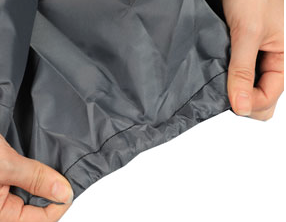
Do not be tempted to “save a few bucks” by buying a kayak cover that “fits most kayaks” which doesn’t feature an elastic band or draw string. These kinds of kayak covers do not fit snuggly to the kayak, meaning that they will blow off or not appropriately seal off the kayak from the elements.
Easy to Use. I can be fairly lethargic. This negative quality is compounded when I find a product that is not easy to use. If it isn’t easy – I won’t use it. If you are the same way, you need to be careful when looking at kayak covers. Some are made out of material that is not “forgiving” and actually causes you to need a partner to get the cover onto the kayak. No thanks!
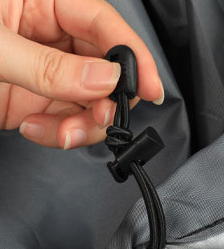
While you tandem kayak fishermen may be OK with this, most KFC readers are soloists and they need a kayak cover that can be applied and removed with ease. Speaking of, make sure that your kayak cover can fold down into a relatively small size. Why? You will likely take your kayak cover with you onto the water and, as you know, free space on a fishing kayak is fairly limited! Get a kayak cover made out of a material that allows it to be folded down or bunched up into a smaller size. They already make foldable kayaks and, lucky for us, they make foldable kayak covers too!
Buy the Best Kayak Cover
(Commissions Earned)
The kayak cover that we’ve linked to above is a good example of a high quality model. I bought mine a few seasons ago and I have been very pleased with it. It is made with oxford polyester, a particularly resilient form of material that is tough enough to protect my kayak from the elements while still being easy to work with (I can cover and uncover by myself) and relatively space saving (I can fold it down into a pretty small size when I am not using it).
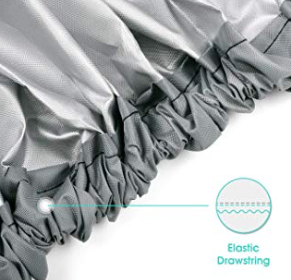
It comes in two sizes. The first is for kayaks measuring approximately 11 feet and the second is for kayaks measuring approximately 12.5 feet. This is an appropriate sizing for most kinds of kayaks (at least those used for kayak fishing).
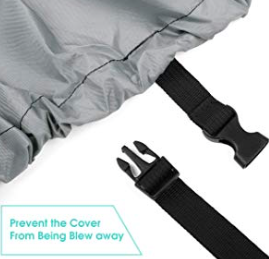
I also like that it comes with an elastic draw string. The elastic is pretty high quality and the cover has retained its shape despite many instances of the elastic being pulled and loosened. It always snaps back into place and assures a snug fit. The cover also comes with the “clip” style safety straps so that I have comfort that it won’t fly off of my kayak in a high wind or when I am driving down the highway with my kayak trailer.
My Experience

I’m sure that I am like the rest of you in that I truly care about the longevity of my fishing kayak. Not only did I spend a lot of money on it and I want it to stay nice, I want to avoid having to incur “downtime” while I repair damage that occurs when a kayak cover is not used and the elements cause for it to deteriorate. This means more money spent, more headache experienced, and less time on the water for fishing! All things considered, a kayak covering is a relatively inexpensive piece of kayak fishing gear, but there is one overlooked benefit.
Consider that a kayak cover is one of the few kayak fishing accessories that actually “pays for itself” over time in terms of damage prevented. When I started to think about it in those terms, I decided pretty quickly that a kayak cover was a good investment. Perhaps you feel the same way. Do me a favor, if you are going to “wait and see”, at least make sure that you buy a kayak cover before the damage to your kayak becomes irreversible. Too late for a kayak cover at that point!
Oh, while you are here, take the next step towards becoming a better kayak fisherman by learning how to use kayak outriggers and learn about the best kayak stabilizer for kayak fishing!
Kayak Cover: Summary
Whew! That was a lot! It is our hope that this Ultimate Guide has proven to be a valuable resource in terms of teaching you everything that you are desiring to know about these kinds of covers! Of course, if you have made it to this point in the article and feel like you still have questions about this particular kayak fishing accessory, please post in the Comments section below! Our Comments section is seen by thousands of kayak fishing enthusiasts who visit KFC and we are certain that if we don’t know the answer to your question, one of our loyal readers would love to help you out!
Ready to take your kayak fishing skill to the next level? Look into entering a kayak fishing tournament, here!
Comments
Do you see kayak covers in your region of the country? Do you find that kayak fishermen more often use a “blue tarp” or something more custom fitted? Have you noticed that kayaks that are constantly exposed to the elements are prone to become damaged and often deteriorate more quickly than kayaks that are protected by a kayak cover? Share your thoughts and opinions with us! We read and reply to every comment and we love to interact with this kayak fishing community!
